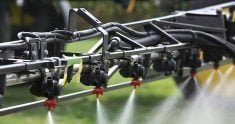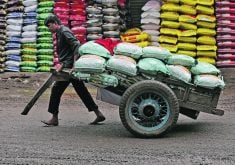The Alberta government plans to spend $600 million to build dikes, dams, reservoirs and diversions to protect communities against future flooding.
Some of these projects, if they go ahead as proposed, may force residents who live along the Little Bow River in southern Alberta to move.
One of them is Shirley Pickering, a retired farmer and environmental scientist. She and others in the region want the province to consider the economic, environmental and social impacts of new infrastructure such as diversions and dry dams.
The proposed diversion plan for her area affects 70 kilometres of the Little Bow River and may force people to leave or lose farmland.
Read Also

Agritechnica Day 3: Hybrid drive for a combine, data standards keep up to tech change and tractors of the year
Agritechnica 2025 Day 3: Hybrid drive for a combine, data standards keep up to tech change and tractors of the year.
“At least 10 or 12 families would have to be relocated out of the valley,” Pickering said.
The province, which has been talking with communities and engineering firms about ways to prevent future flooding, presented its plans at a special water management symposium in Calgary April 29.
Environment minister Robin Campbell said the government has decided to deal with flood and drought management on a watershed basis because one area cannot be repaired without looking at how it will affect others.
Engineers and the government also looked at the Red Deer and Athabasca watersheds but decided that no work is currently needed.
“We had hundreds of options and everybody had an opinion,” Campbell said.
The government has said it will start meeting with those involved soon.
New dams and diversions will affect public and private land, so compensation must be negotiated with landowners.
“There will be stakeholders who question whether plans are in the appropriate place,” Campbell said.
Pickering could be one of those.
Flooding was significant in her area last spring. Wells and property were damaged, and residents hauled fresh water for six months until their wells recovered.
The Little Bow River is in a narrow valley and has a riparian zone of mostly native pastures and some irrigated forage crops. Besides a diversion, a dry dam is also under consideration on the upper Little Bow, 16 km downstream of High River. Water would be held and slowly released over a couple months.
“From a community perspective, turning it into a floodway will come with some damage if they put it down there,” Pickering said.
“The Little Bow River is bank full at 10 cubic metres per second flow,” she said.
“After that, the river starts to flood.”
She and her neighbours are part of the Upper Little Bow Water Users Association, which they formed when the government wanted to add water storage in the valley 20 years ago.
Numerous studies and reports have been done on how to handle floods in Alberta. Pickering said these latest initiatives are politically driven and an attempt to amend past mistakes.
“Our history of bad planning has given us this tough legacy to deal with,” she said.
Pickering also sits on the Highwood River Management Plan’s advisory committee, which has been studying ways to manage the droughts and floods common in the region.
“This flood thing seems to be happening outside of regular water management procedures,” she said.
Norine Ambrose, executive director of the Alberta Riparian Habitat Management Society, has been working with the provincial task force on potential projects. About $20 million has been set aside for natural solutions such as improved and restored riparian areas and wetlands.
Ambrose doesn’t think dams and diversions are the solution.
“We are not going to build enough dams to ever stop flooding,” she said.
“Not only do we not have the resources to do it, you can’t put dams everywhere.”
Diversions are supposed to be used only at high water events.
However, one of the issues is how much flooding to allow because it is part of the natural cycle. For example, stands of cottonwoods need flooding to regenerate themselves.















